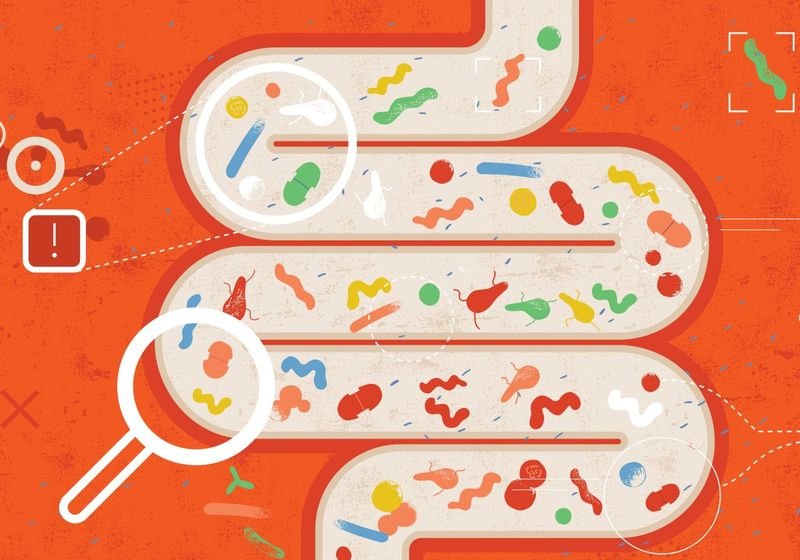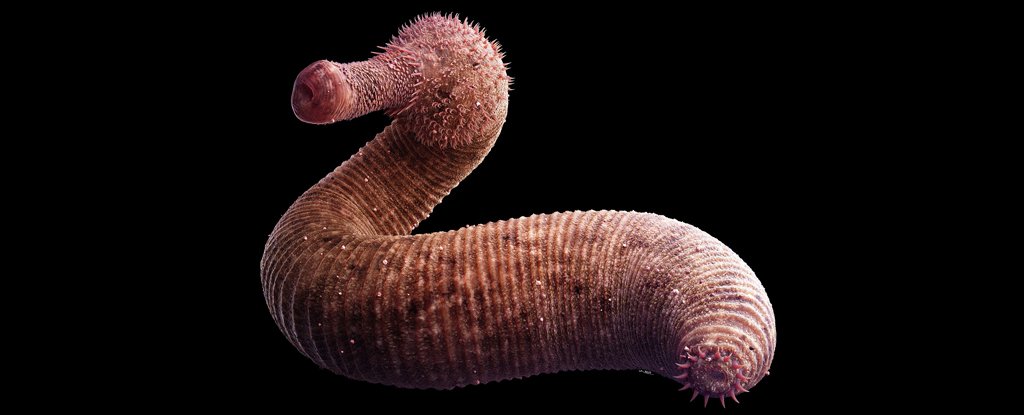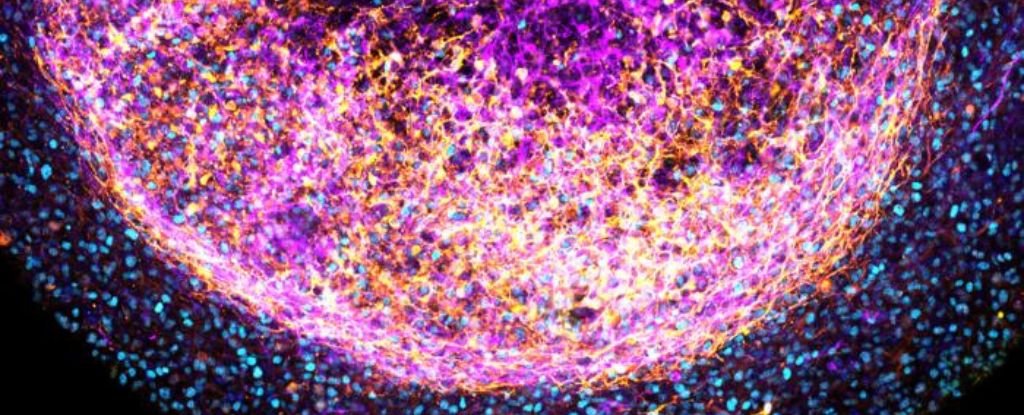Nearly two centuries ago, scientists discovered bilirubin, a yellow pigment produced by the breakdown of red blood cells that turns the skin and whites of the eyes yellow if it accumulates in the body.1 However, the enzyme essential for its breakdown has evaded scientists ever since. In the 1970s, researchers suspected that the human genome might not carry the gene for this enzyme when they found a few bacterial species that break down bilirubin, revealing that the human gut’s microbial tenants take over the process.2 Now, after more than 40 years, scientists zeroed in on the enzyme in question.3 Reporting in Nature Microbiology, they described numerous other gut bacteria that break down bilirubin and a link between the absence of these microbes from the gut and several common diseases.
When bilirubin passes through the gut, it is either broken down by bacteria and expelled from the body or reabsorbed, where it accumulates. Limiting bilirubin buildup is crucial because too much of it causes the yellowish skin pigmentation associated with jaundice and in severe cases, neurological damage. Thus, the ratio of bilirubin-digesting bacteria to nondigesters in the gut can tip the scales in one direction over the other and influence the pigment’s levels in the body.
Xiaofang Jiang, a computational biologist at the National Institutes of Health, teamed up with Brantley Hall, a microbiologist at the University of Maryland, to hunt down the gut bacterial enzyme essential for bilirubin’s breakdown. They planned to compare genes shared between bilirubin-digesting bacteria but missing from nondigesters until they found the gene encoding this elusive enzyme. However, they only knew of a handful of bacterial species that break down bilirubin, and they needed more leads to home in on the gene in question.
To find new bilirubin-digesting bacteria, they needed a method for detecting the breakdown of bilirubin. The products resulting from the enzymatic degradation of bilirubin are unstable and readily react with iodine to produce organic molecules that fluoresce.4 So, the team added bilirubin and iodine to different bacterial species in a dish and noted those that fluoresced, indicating that they digested the pigment.

The few known bilirubin-digesting bacteria belong to the phylum Firmicutes, so the researchers prioritized these and closely related gut bacterial species. They found nine species that gave off a fluorescent signal. With enough species, the researchers set out to compare their genomes and spot the gene that encodes the missing enzyme.
The researchers expected these bacteria to share a great number of genes, so they thought about what the gene encoding this enzyme might look like. They started with a hunch they had about how the enzyme would work: Bilirubin contains four sets of carbon-carbon double bonds, but the bacteria spit out structures containing single bonds, suggesting that their enzyme would target these double bonds. Scientists classify this type of enzyme as an oxidoreductase. After filtering for genes that were common across five bilirubin-digesting bacteria and missing from five closely related nondigesters, they looked for ones that bear similarities to known oxidoreductases. This led them to a single gene.
To find out if this gene encodes a bilirubin-digesting enzyme and not some other oxidoreductase, they transferred it into bacteria that couldn’t break down the pigment and measured whether these bugs developed bilirubin-busting abilities. They found that the gene conveyed the ability. Furthermore, these boosted bacteria broke down all four of bilirubin’s double bonds, indicating that additional bacterial enzymes aren’t needed for this step of bilirubin’s breakdown. “Previous microbiologists thought there might be four enzymes that were responsible for this,” said Hall. “But our enzyme is one enzyme that does four things.” The team named the enzyme bilirubin reductase (BilR).
Next, they explored how widespread BilR was across bacteria. They searched the Genome Taxonomy Database and found 658 unique bacteria, the majority of which belonged to the Firmicutes, that contained closely matching sequences.
Given the widespread expression of the gene in bacteria, the researchers turned their attention towards the human microbiome. They examined the gut bacterial genomes of 1,801 healthy adults and found that virtually all of them carried bilirubin-digesters. Hall said, “I’m amazed that this enzyme is present in essentially all adults—we said 99.9 percent. Even though the microbiome composition of adults is so different, there’s this commonality.”
Healthy adults carry bilirubin-digesters, but the team wondered whether they were absent in people with certain illnesses. They found that more than 30 percent of people with inflammatory bowel disease and nearly 70 percent of infants under one month of age lacked bilirubin-digesters.5,6 Bacteria only begin to colonize the infant gut after birth, so the absence of bilirubin-digesters might partly explain why jaundice is common in newborns.7
With the enzyme’s sequence in hand, scientists can expand on bilirubin research in myriad ways, including for therapeutic applications. “It was this landmark discovery that brought us to this point,” said Zachary Kipp, a pharmacologist at the University of Kentucky who was not involved with the research. “How can we target [bilirubin], and what is its significance to different diseases? [Finding out] would be a really good next step for this research.”
Terry Hinds, a pharmacology researcher at the University of Kentucky who was not involved in the study but who served as a peer reviewer for the paper, said, “Something we’ve been thinking a lot about is, now that we know the enzyme, can we produce mice with it? And are there probiotics that can control it?”
BilR is just one of many gut bacterial enzymes that have evaded scientists. “There are a lot of unknown enzymes that are encoded by gut bacteria that play essential roles that are important for human physiology,” Jiang said, who aims to employ bioinformatic tools to dig up more of these hidden gems in the future. Hall added, “Understanding this dialogue between the host and the products from the microbiome is going to be critical to understanding how microbiomes contribute to health and disease.”
Hall filed a provisional patent as an inventor, along with the University of Maryland, for the use of the bilirubin reductase enzyme.
References
- Herta T, Beuers U. A historical review of jaundice: May the golden oriole live forever. Clin Liver Dis. 2022;20(S1):45-56.
- Fahmy K, et al. The reduction of bile pigments by faecal and intestinal bacteria. Biochim Biophys Acta Gen Subj. 1972;264(1):85-97.
- Hall B, et al. BilR is a gut microbial enzyme that reduces bilirubin to urobilinogen. Nat Microbiol. 2024;9(1):173-184.
- Kumagai A, et al. A bilirubin-inducible fluorescent protein from eel muscle. Cell. 2013;153(7):1602-1611.
- Zhao X, et al. The relationship between serum bilirubin and inflammatory bowel disease. Mediators Inflamm. 2019;1-7.
- Kirk JM. Neonatal jaundice: A critical review of the role and practice of bilirubin analysis. Ann Clin Biochem. 2008;45(5):452-462.
- Gensollen T, et al. How colonization by microbiota in early life shapes the immune system. Science. 2016;352(6285):539-544.










